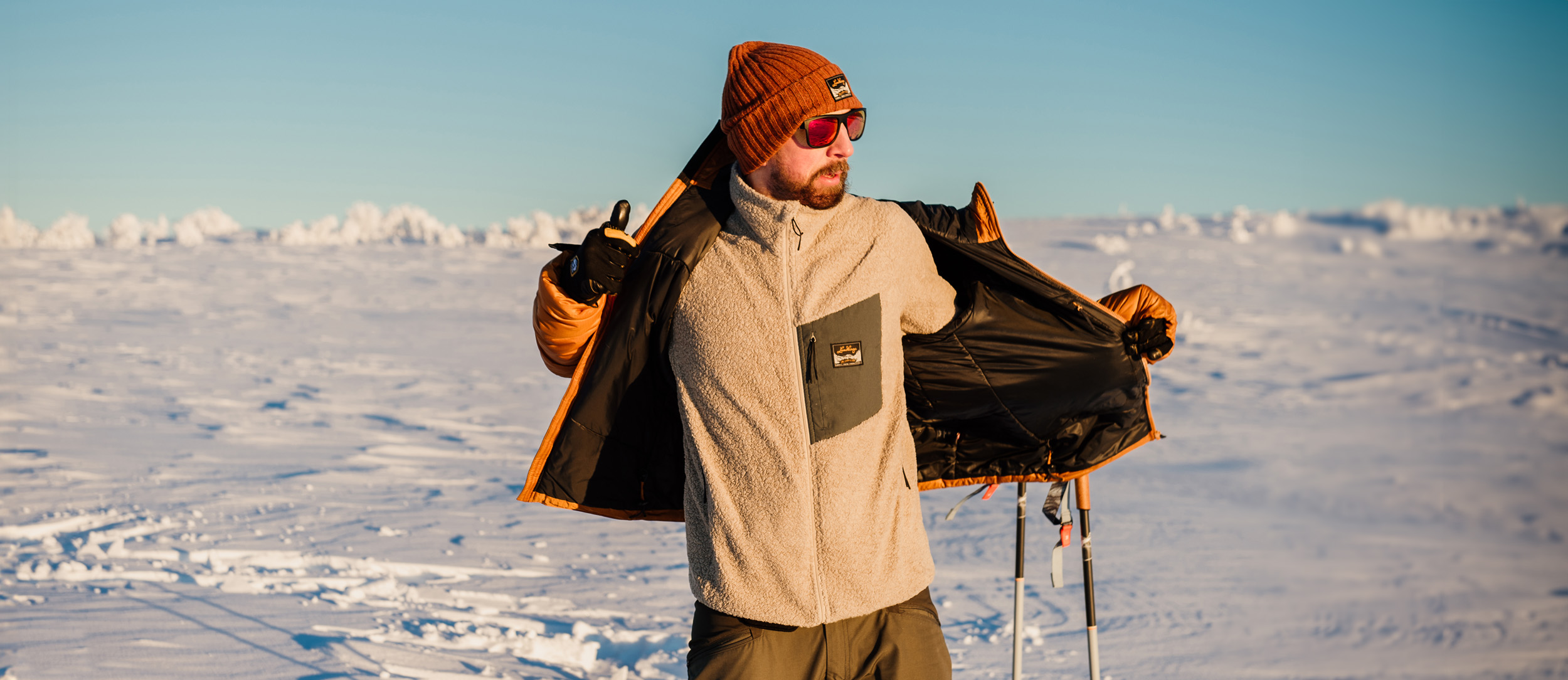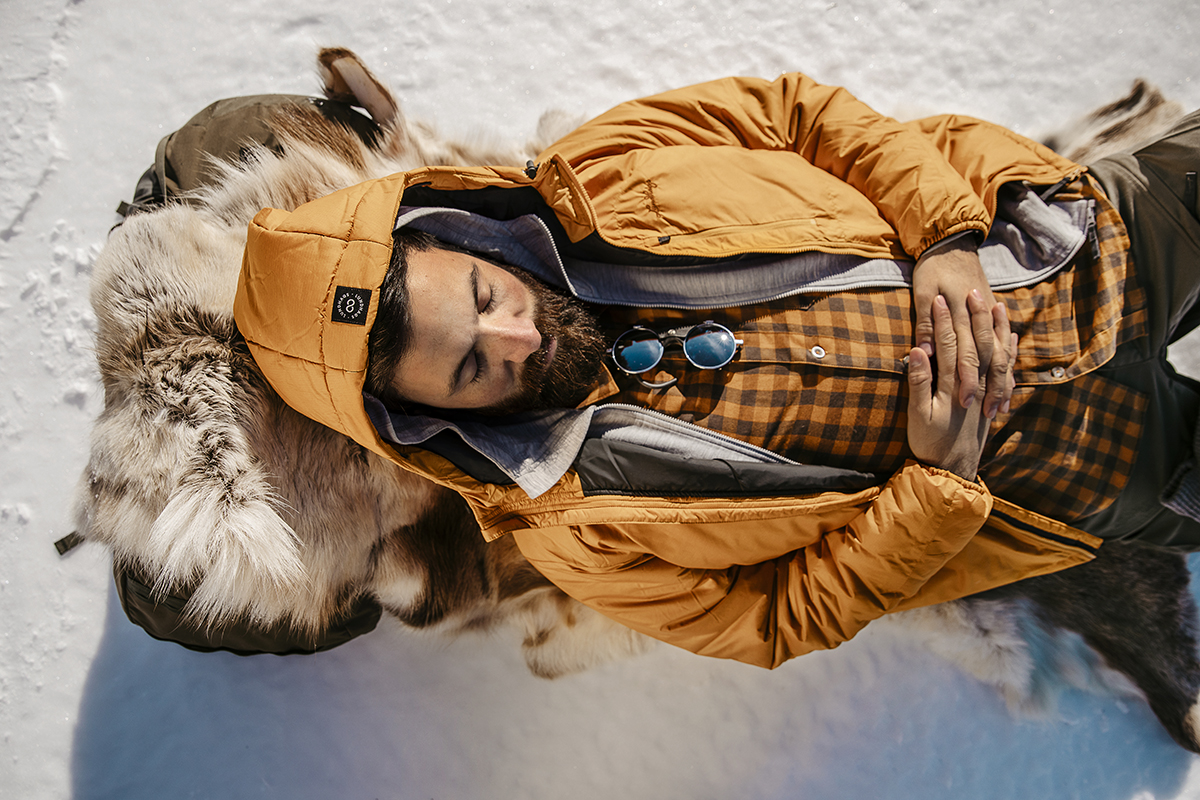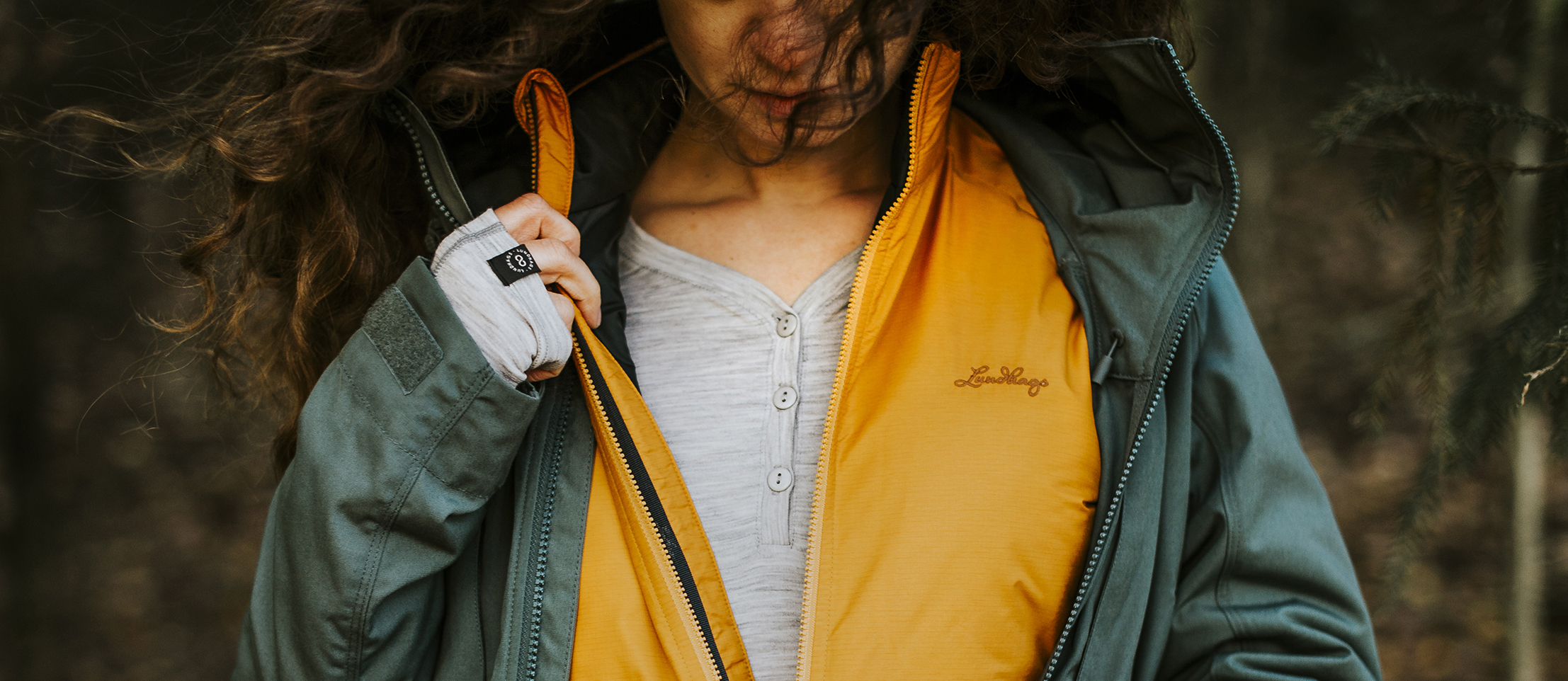Dressing layer-on-layer for hiking
Being well dressed is of importance for really being able to enjoy the nature experience. The function of the clothes is to keep you dry, warm and protected.

By dressing in several layers, you can easily regulate the attire when the weather changes or according to the degree of activity and provide adapted protection against both cold, wet and wind.
It is usually called the layer-on-layer principle.
Briefly:
An inner layer that transports body moisture, an intermediate layer that keeps the heat, an outer layer that protects against weather and wind and an extra warming layer for the breaks.
Layer one - comfort closest to the body
The innermost layer has the task of heating while transporting moisture away from the body. Wool or synthetic fiber are functional material choices.
We recommend merino wool, it does not itch but is soft and comfortable. Wool warms even when wet, cools when hot and insulates better than synthetic fiber. Wool is also renewable and biodegradable.
Synthetic materials have the advantage of being very quick-drying and quickly dissipate moisture from the body. A mix of wool and synthetic occurs and then takes advantage of the advantages of the two materials
Read more about Lundhag's merino wool and its properties here
Layer two - warming intermediate layer
Intermediate layers must insulate and ventilate the body by driving the moisture further from the first layer of clothing, while the heat must not leave the body unnecessarily.
The insulation in the intermediate layer comes from the air that the material contains - if it is very cold outside, a thicker layer is needed that binds more air, while a thinner intermediate layer is better suited to warmer weather.
Garments in wool or wool mix fit perfectly, preferably a shirt or a nice hoodie.
It is practical if these garments have buttons, zippers or other openings so that you can easily ventilate excess heat.
Find Lundhags 100% Merino wool here
Layer three - shuts out the elements
Layer 3 is the layer that will keep moisture, wind and other external elements away. The bearing should be at least wind and water repellent to protect against cold and wet, it should be able to retain heat and release moisture from the bearings inside.
A rainy day is a waterproof shell garment to recommend. The material keeps you dry and conducts moisture out of the underlying layers and it can also be accelerated through ventilation openings on the garment.
Garments without a membrane in cotton / synthetic blend contribute with high comfort as they are both wind-resistant, ventilating and quick-drying. Waxed alternatives of these also work excellently in winter to withstand wind and snow.
Read more about Lundhags Waterproof here
Read more about Lundhag's jackets here
Lundhag's pants guide can be found here
Layer four - the reinforcement garment
You wear the reinforcement garment during breaks or when you stop to set up your camp during the hike. However, if it is cold and you are sedentary for extended periods, such as hunting or fishing, you should wear your reinforcement garment at all times.
You can wear a reinforcement garment both on the outside of your shell garment or inside, it all depends on the environment and the temperatures you are to move in - and what you yourself prefer.
We offer heating garments with synthetic filling of first-class quality with high insulation capacity for varying weather conditions.
For the feet, your reinforcement garment can consist of extra insoles of wool, for the hands a pair of extra mittens and do not forget the hat as the head otherwise accounts for a large part of the body's heat loss.



